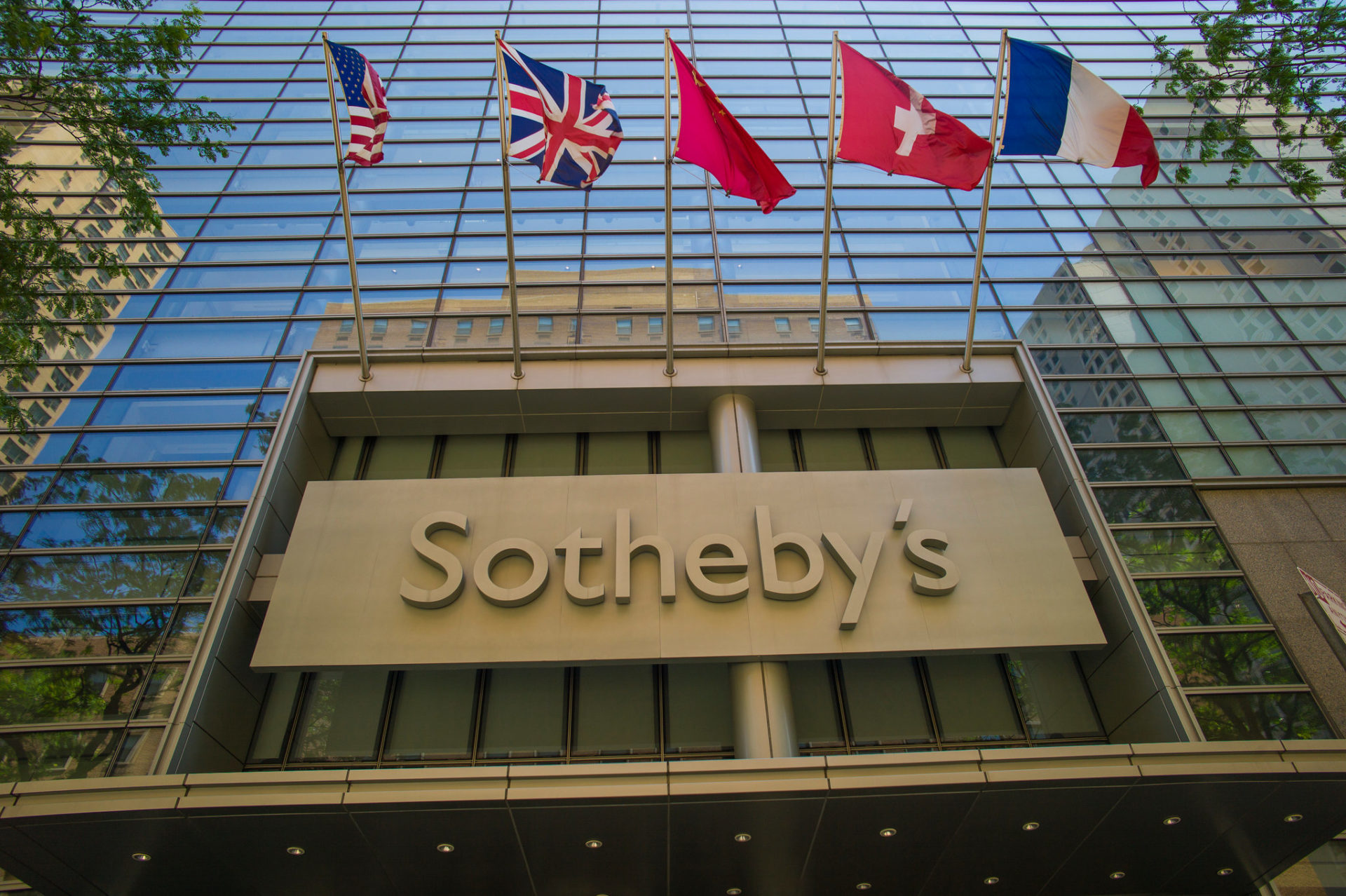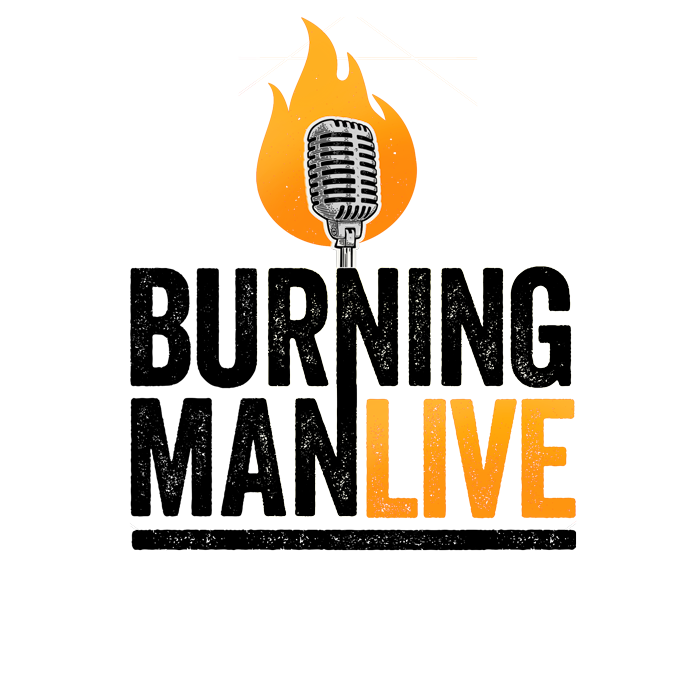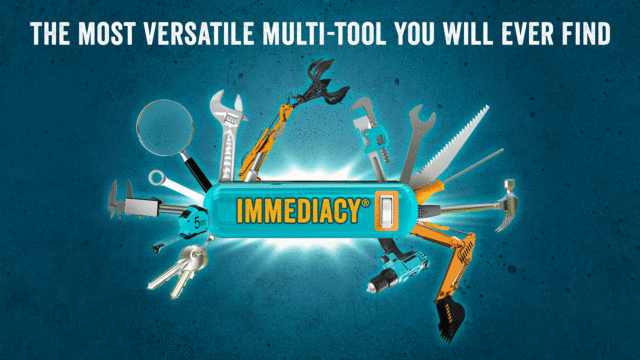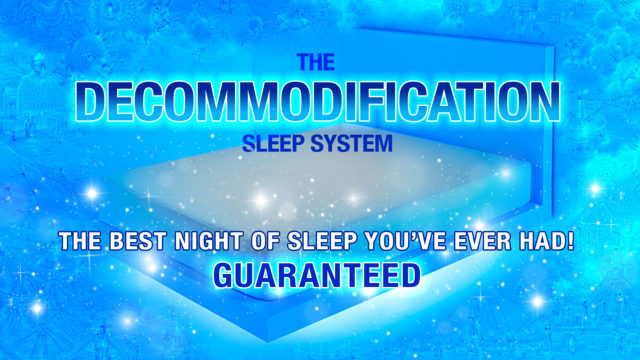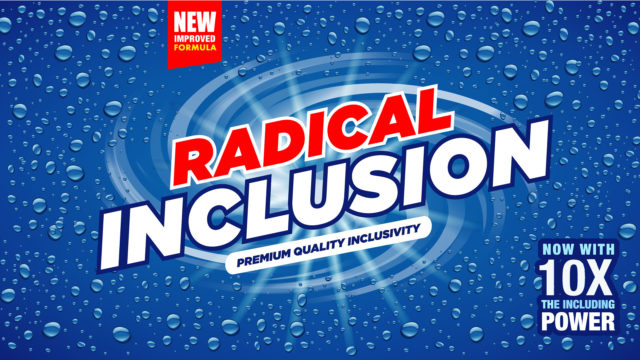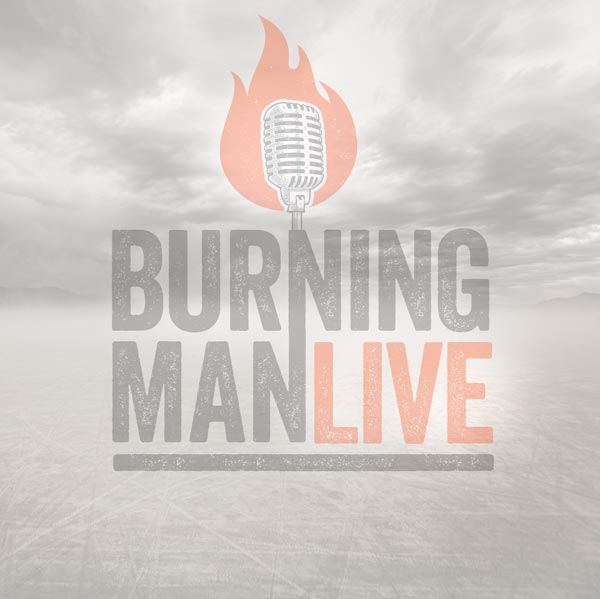
Boundless Space: The Sotheby’s Experiment
Sotheby’s is exhibiting and auctioning the work of 180 artists from around the world inspired by Burning Man culture. More than a third are women, and more than a third are people of color. The offerings are a mix of the sculptures, paintings and photographs, as well as experiences, mutant vehicles, and NFTs.
It’s a collaboration and a collision. It’s an experiment with an institution historically known for overt commodification. It’s an appreciation of art based on intrinsic aesthetic value. It’s a nod to artists.
Stuart talks with Kim Cook, Director of Creative Initiatives for Burning Man Project, the bold lead on this partnership for advancing a values-based culture, and embracing the beastly art marketplace while being pro-artist, anti-racist, and taking not taking ourselves too seriously seriously.
Sothebys.com: Boundless Space: The Possibilities of Burning Man
Transcript
KIM: We collectively are holding the responsibility to actually have a Sotheby’s auction based on the intrinsic aesthetic response to the work, and a desire to support artists.
CHEF JUKE: Meet the people who make Burning Man happen, beyond the desert and around the world; the dreamers and doers, the makers, shakers and innovators, the artists, activists, freaks and fools. Burning Man Live.
STUART: Welcome back everybody to another episode of Burning Man Live. My guest today, I am super excited to have in the imaginary studio with me… One of the joys of my job working for Burning Man Project is that I have some colleagues who are exceptionally smart and articulate and come from very different backgrounds than I do. And one of them is with us today.
Kim Cook is our Director of Creative Initiatives. Hi, Kim.
KIM: Hi, Stuart.
STUART: We’re going to be talking today about a super interesting project where Burning Man Project is collaborating with, of all people, Sotheby’s the famous international auction house to put together an auction of Burning Man related art.
So, Kim, let’s just start with that. Just the name Sotheby’s. I’ve never been to an actual art auction, but I’ve seen a lot of them in the movies. There’ll be some very well-dressed people holding up little paddles with numbers on them, and one person at the front of the room talking exceptionally fast. Is this going to be that kind of an auction?
KIM: As it happens, it will all be online. So no people in a room with paddles.
STUART: Okay. Tell us a little bit more about how this project came together.
KIM: One of our board members, Fab Five Freddy, went to Sotheby’s for a hip hop auction and met the CEO, Charles Stewart, and said that he had been in Burning Man board meetings, knew that we were looking to raise funds (given at that point a year – and now of course, two years without ticket sales); Why wouldn’t Sotheby’s do a charitable auction for Burning Man?
The CEO of Sotheby’s, not surprisingly, said that would be fantastic. So Fab orchestrated a meeting for our CEO Marian Goodell, and Chief Cultural Officer Harley K Dubois, with the CEO of Sotheby’s.
They asked me if I would participate along with a few other colleagues: Steven Raspa from Community Events, Katie Hazard from the Art Department, Danny Kaufman from Philanthropic Engagement.
It was a kind of foray into checking out the motives on the Sotheby’s side and the possibilities on the cultural side. There were a couple of conversations and I actually exited from that. I was like: There’s plenty of people evaluating this. The heads of marketing for Sotheby’s are in this meeting. Clearly it’s a marketing play for Sotheby’s and we don’t do those corporate brand marketing things at Burning Man. And by the way, I’m producing the first virtual burn. So no need to put my time and attention.
STUART: Right. I’ve got to ask: Was Burning Man’s Director of Marketing in the room? That would be Herman, the small scruffy dog.
KIM: Yeah, no, marketing on our plate. But that was where it began. I said, “Let me know if you need me,” because I’ve led other partnerships for Burning Man with the Smithsonian, with Google, with the United States Institute of Peace. The sort of idea of navigating through what it takes to have these kinds of collaborative partnerships has been a good bit of the work I’ve done with Burning Man.
And I really didn’t expect to hear more, except that it didn’t work out. But then in December I got contacted by both Harley and Marian. You know, all of a sudden you have this flurry of incoming that said, “Sotheby’s has put together a proposal. We want you to look at it. We want to do it, but we want you to lead it if we’re going to do it.” And then I was like, “Oh, okay, I guess we’re going down this road!”
STUART: Well, yeah, you mentioned marketing and leveraging the identity (I didn’t say brand). Having been an architect of the Smithsonian collaboration and with this, I know that you’ve referred to the Smithsonian experiment as an experiment, and a learning experience for all of us. What do you expect to learn that’s different, in this engagement with Sotheby’s, from what we learned in the museum world?
KIM: Well, the question that I asked myself is if we are doing this, then why would we do it? And how would we do it? Burning Man has never really been engaged with a 5 billion dollar global corporation like Sotheby’s with 80 offices in 40 countries and two heads of global marketing. Marketing in the end is about telling stories and messaging something. What do we want to message? That was the first thing I had to ask. If we do anything, Smithsonian or otherwise, there has to be a legitimacy in the choices that we’re making that ties back to our community.
And I feel that the responsibility of the organization at the center of the community is not to dictate or mandate, but actually to steward. We have to be very cognizant that we’re sort of the designated representatives, but not the entire collective that is the culture of Burning Man. So how to do marketing if we were going to market, to what end? The ends that we came up were:
One. We could talk about the 10 Principles using the vehicle of a marketing mechanism, and that Burning Man is a culture that is deeply steeped in values. Not proselytizing. Not evangelizing. A lot of language that started to come at me initially from Sotheby’s was like, “and this will open new doors for Burning Man.” And I was like, “We don’t care about opening doors. That’s not our intent.”
And we are interested in aligning with other beings, entities, organizations, individuals, and artists that care about the things that we care about, and having people know that we care about the things that we refer to as the 10 Principles. That seems interesting and useful.
The second thing was: What will the funds be used for? And how might we use a charitable auction that supports Burning Man to also support artists? The structure is that the artists contribute a work to Burning Man in order to sell it in this auction. And the artists can choose to retain up to 55% of what it sells for.
So how might we make an offer to artists that legitimately could be of benefit to the artists themselves, not only from that portion of proceeds, but that the proceeds from the sale can be redeployed through the Art Department, through the cultural initiatives that are meaningful for Burning Man, and be made good use of.
And then the third thing for me was to say, “Okay, Burning Man has accelerated and prioritized radical inclusion, diversity and equity. Sotheby’s makes no bones about “We are elite luxury.” You know, the essence of commodification is to objectify something or someone and give it a transactional value. That is what Sotheby’s is in the business of it. In fact, the exclusivity elevates, the sense of scarcity elevates and escalates the amount of money involved in the transaction.
So how might we be looking at that through the lens of anti-racism? If Burning Man is going to prioritize on one side of the house, radical inclusion, diversity, and equity, and go out dancing in public on the other side of the house with Sotheby’s, then we must examine that and say: What is the adaptive leadership? What is the utility of the mechanisms of a beast like the art marketplace? in ways that we can try to deconstruct and reconstruct and advance an ability to be anti-racist.
Those were the three things that I asked about the approach to the design of this initiative:
The advancing the sense of Burning Man as a values-based culture, relative to the 10 principles.
The making of value out of the money and proceeds to benefit artists
This question around design approaches that would be explicitly anti-racist inside of this already existing mechanism of the art marketplace.
When you ask how this might be different from the Smithsonian or how this might be in jeopardy of commodification, I thought that the Smithsonian was an experiment and it had strengths and shortcomings, and I’ve written about that.
Harley K Dubois has been a champion for how those cases on the edge allow us to learn. And hopefully also allow us to influence the partners that we’re working with in ways that are constructive, and move evermore in the direction of the kinds of communities we want to be forging and the kinds of relationships we hope to see in the world.
STUART: Well, it does seem like a bold experiment. If the Smithsonian introduced Burning Man art into the confined space of a gallery. Here, we’re introducing Burning Man art to the auction block, which does seem very, as you say, the epitome of commodification.
Just structurally, how does that even work? How do you put a value on some of these pieces that have always been acts of love and generosity and Gifting before? How do you set your reserve price in cases of artists who have only shown really in the community of Burning Man?
KIM: Well, this is probably a very good place to start the conversation about co-learning and the things that unfold when you set out on a journey that you might have speculated about, but really come face to face with once you’re in it.
I knew that the artists of Burning Man, for the most part, didn’t have established market values relative to their work. Most don’t have gallery representation, and those that do make a living of some sort off of their work are typically outside of the gallery and auction marketplace. They are public artists or they’re perhaps touring their work through the festival scene that’s become more interested in immersive experiences and what have you.
In the agreement with Sotheby’s, we were required to show up with two million dollars worth of art (low estimate on Sotheby’s terms), and they suggested that the catalog should be 150 to 200 artists. I started to pencil out with a spreadsheet, like, “Alright, if I have five artists, maybe, that sell for a hundred thousand dollars, that leaves $1.5 million left, divide that by… you know, whatever…. Oh shit. My artists still need to sell it $23,000 each, if I’m going to get…” That kind of noodling with the numbers.
And I thought, I know one or two famous artists that I may have had breakfast with. And I don’t think they’re going to give me an artwork if I call them up. So I immediately formed an auction committee and then another circle we called Nominators and Connectors, and then another circle, which was people inside of Burning Man, so that we could begin to think about way broader than who I could think of. And I’ve worked in the Art Department for several years and I have known hundreds of the Burning Man artists, but that didn’t change the challenge on paper.
I began to think about how very well-known artists could attract attention to help other artists do well. And so my first two calls were to Leo Villareal and Hank Willis Thomas. Kind of like “You all are well-known and established. Here’s how I’m thinking about this. What do you think? Will you participate?” And a number of other calls that became sort of bellwether guides for how to think about this.
In the end we have 180 artists participating and they are from all over the world. 70 are artists of color – or 40%, basically – 70 are women. And the process of estimating and setting reserves has revealed not only what we knew going into it, that Burning Man artists may not be established in the art marketplace, but also the majority of the artists of color from around the world similarly do not have an art marketplace value.
Now we do have a low estimate in the neighborhood of the two million dollars I was aiming for. And we also have a lot of work where you see, like an artist from Nairobi who suggested his work was worth $80, and an artist represented by a gallery who suggests that their work is worth $150,000. We have this unique opportunity to see this side by side contrast and valuation in the marketplace, and reflect on that.
I have another artist who’s a queer activist from Mexico who values his work at $10,000. He’s got a gallery representation. So, that’s not a low number for most… I can’t pay a $10,000 artwork, but I have placed his work planned for the exhibit next to an artist represented by a gallery in the States who sells at $125,000, by a magnitude of 10. And if you look at the work side by side, you can see that both of them are extraordinary artists, and how interesting, complex and challenging this idea: How do you set estimates?
STUART: So are there some risks associated with overvaluing or undervaluing these arts where you don’t really have a lot of background?
KIM: There are risks in every direction. I have found myself in some kind of mad adventure with pitfalls in every way, so…
One is people who are associated with Burning Man who might buy this art, might have every reason why they would give directly to the artists of Burning Man and have been perhaps in the past already (or invested in their theme camps), or make a direct donation to Burning Man that’s a tax write off (rather than buying a piece of art), or they feel strongly we shouldn’t be commodifying art. So the idea that just outside our back door there’s thousands of burners with money who are going to buy the art is a false premise.
The idea that the Sotheby’s patrons and collectors will buy art that has no data to support that it will be a worthwhile (in quotation marks) investment, that is also a false premise. They buy because they think the work will appreciate.
So I’m sitting in the middle of… And I say, I, and I should not like a lot of this is really thankfully, not held by me. It’s held by an auction committee, by the Nominators and Connectors, by our communications team, by the Art Department. A lot of people are stepping into this with me, so we collectively are holding now the responsibility to actually have a Sotheby’s auction be responded to based on the intrinsic aesthetic response one has to the work, and a desire to support artists.
If you’re in it, because, you know, “Go burner. Go team!” Or if you’re in it, like art investment, these things may bring you returns for buying in this auction. But the biggest return and motivation I think will need to come from people who passionately care about art and artists for their own sake.
STUART: Actually that’s quite exciting that the artists are going to have some opportunity out of this. You mentioned. Yes, Burning Man doesn’t need to open more doors, but I’ve thought for a long time that our artists do. I know a lot of people who are just barely making it as working artists, need to buy dental insurance for their kids, you know.
So any opportunity to give some love back into our artist community so that they continue to make more art in Burning Man into the world is clearly a good thing. And that’s actually a contrast to other auction programs that Burning Man has done before. In the Artumnal charity auctions (which we did for many, many years) isn’t it true that all of the money went to Burning Man Project. And none of it went to the artists? So that was all a gift?
KIM: That’s true. Yes.
STUART: Well, the other thing I’m really interested in is. You know, what is a burner artist? And this is a question I’ve asked lots of artists in and outside of the scene, and their answers vary over time. What exactly is Burning Man art?
Now, historically, that has been determined basically by self-selection bias, right? People who have brought art to a Burning Man event became, in some sense, Burning Man artists. But in this case, you are widening that circle out. You and the committee are intentionally widening it out from people who have prior Burning Man art experience.
I’m just curious what percentage of the artists represented in the show have brought work to a Burning Man event, and what percentage are new to the culture?
KIM: The opportunity here… The risk is that we will have set out to do a good thing and we don’t achieve it.
The opportunity is that in fact, we will have used our community, our message, our passion to give the opportunity for people to learn about these artists. The catalog is designed, with Sotheby’s support, so that every artist in the catalog has their own what is called the lot page that has photos of the work, photos of the artists, stories, artists statements, video links, and links to their websites as they choose.
The catalog itself will be open for about three weeks before the bidding starts. And the possibilities are that we can drive people who may go straight through the catalog like a magazine, to go find and source art, or make donations to these artists directly.
We’ve worked hard to really actually make this a true level playing field for the artists who participate that’s meaningful to them long-term. I think that we have a big, big chance to do something wonderful for all of the artists in the catalog.
You know, we’ve been talking about this idea of artists who have been to Black Rock City, artists who have made art for a Regional, artists who have never been to either Regional or Black Rock City. And how do I census take on that? When I look at a list of names, am I going to arbitrarily create a demographic? What am I going to do? Look up ticket sales data? Does someone self-declare as a burner artist or not a burner artist?
Some of the most compelling, amazing, exciting conversations we’ve had are with artists such as Victor Lopez in Mexico, who’s Zapotec and who even invited and offered a ticket to Burning Man will most likely have visa and airfare challenges that are insurmountable, but who refers to Burning Man as a beacon, as a symbol of free expression.
And his work is completely dedicated to his culture, to his community, to the survival of indigenous peoples in Mexico. If he makes money, it goes back into the community print center and art center. Now, if you look at the 10 Principles and you say Participation and Communal Effort and Decommodification and Leaving No Trace, and all of a sudden Victor Lopez is the most burner burner who’s never been to Burning Man that you could meet.
STUART: That’s great. Well, there are some old school Burning Man artists that I would recognize too, as well, right?
KIM: Yes, yes, yes. I am so grateful to the artists of Burning Man. Like you, I’ve probably asked different questions, but I’ve asked many artists over the years: Why do you do this? It costs so much money. It takes so much effort. People break up with their significant others. They run up credit cards, their families run up credit cards. And one of the things that I hear from those artists is “Because there are no white walls and no gatekeepers.”
STUART: Exactly.
KIM: This collection of 180 artists has been actually very much approached similarly, without a heavy handed, sort of, this is, or this isn’t art. Sotheby’s wouldn’t be talking to Burning Man about an art auction if it weren’t for the artists of Burning Man who over time have been so committed and passionate and generous and inspiring to others.
David Best is doing a rocket car. Henry Chang is willing to do a commissioned original mutant vehicle. Miss Velvet Cream is doing an original wearable. We have archival gift necklaces from the event. We have Kate Raudenbush and Jen Lewin and Laura Kimpton and HYBYCOZO and Marco Cochrane. We definitely have some greatest hits in our rotation for the auction.
STUART: Let’s talk more about the art and about the artists. You just mentioned art cars, costumery, material culture. So this is not just a sculpture show. What other styles or genres of art might be represented in the catalog?
KIM: We definitely have things that are based in photography, things that are sculptural. There’s an artist named Betsabee Romero from Mexico who has a piece based on a VW rim. So really. We also have experiences. So Ursula Berzborn and Grotest Maru in Berlin. You can bid on spending a day and a half in Berlin learning to costume, makeup, and still walk, and then go around and learn about East and West Berlin and how the art and culture was influenced by the removal of the wall, and how that still has an influence on what’s happening in the art scene there.
STUART: Super interesting.
KIM: Yeah. We have non fungible tokens, jewelry, we have couture from Iris van Harpen in Amsterdam. You can spend a day having your photo taken and picnicking with Michael Garlington and Natalia Bertotti and get a family photo with a custom frame. There are sculptures, photographs, things that are sort of mixed media, If you will. They hang on a wall, but they have a real materiality to them. There’s Burning Man memorabilia. There’s tech space art.
Over the years of working with the Art Department – now I’m working more in this collaborative partnerships way – but I got to facilitate the Art Honoraria Process and the Art Department for five years. And what I love is that you never know what you’re going to find on the playa. And for sure this collection with Sotheby’s reflects that same sensibility; bold, dynamic.
And there’s even a staff member, when I asked her to help me, I was like, “You know, we can’t take ourselves too seriously.” And she and her husband took a piece of dusty wood that they found on the ground that the last Man build and mounted it. And it’s being sold as a piece of art from the Intolerable Arts Collective. So, we have a little bit of everything.
STUART: Did you say something about fungus? A non fungus infection? What was that?
KIM: Non Fungible Tokens, NFTs, are, of course, for those who are paying attention to popular culture, a new sort of remarkable (and to some indecipherable) component of the art marketplace.
It goes back to blockchain technology and being able to have a smart contract associated permanently with something that we mostly have associated with cryptocurrency. Currencies are fungible, right? You can have multiples of them and it works in a different kind of way, but assets that are non fungible, they are uniquely created. And that could be like real estate, like your house would be non fungible.
So artwork is now being minted, meaning that there’s a smart contract associated with it, and this digital asset can be sold. And one of the things that’s interesting about it is that it’s possible to bake in permanent royalties for artists. So every time that digital artwork trades hands, the artist is going to get a royalty – unlike what happens in the regular art marketplace.
For some people they’re like, “That’s vaporware. Remember the pet rocks? What the hell? Why would I do that?” That’s like, because once it’s digital people could make multiples all over the place.
On the other hand, I would propose that we think about the generations of 20-somethings to 40-somethings that have been living and playing and socializing inside of game worlds for decades, where you actually make friends, meet friends, do e-sports, buy what are called skins inside of Fortnite, and amplify your powers, and do other kinds of things. You know, even young people… My nephew’s 21 and he won’t go play in a game if his friends aren’t hanging out there too, right?
And so for those people to acquire something and digital space is already a given, it’s already a form of reality. So to think that this would evolve into social virtual spaces, just like we did with the virtual burn last year and this year, where people set up camps, set up experiences, and then acquire artwork to put there; it’s not as big a leap as it may seem. And so we’re experimenting with minting some non fungible tokens and offering them for sale.
You’ll notice in this entire collection, there’s very little reference to the desert. There are some, some artworks that you will have seen in the desert, a few photos, a few things. But I also felt like I wanted to make sure that we didn’t just do the lazy, easy exploit of the exotic nature of Burning Man on a superficial level. I really wanted us to show the depth and breadth of the creativity of our community, and that it doesn’t rely on the more superficial sensationalization of all of the beautiful things we see in the desert. It has a big expanse beyond that.
So even with the non fungible tokens, certainly people have said… I don’t know how many people have suggested to me what they think is the brilliant idea that we could do an NFT of a Larry Harvey video, or we could do an NFT of the Man burning or…
STUART: That’s starting to get creepy.
KIM: I know! And I’m like, “No, not at all.”
STUART: So what are we doing? What are some of the NFTs in the catalog?
KIM: Well, there is a 1975 Ant Farm Chip Lord piece called Media Burn.
STUART: Yes.
KIM: That’s going to be an NFT.
STUART: A Cadillac into a wall of televisions?
KIM: That one exactly.
STUART: Oh my God. OK.
KIM: Our Playa Restoration leader DA has created his first NFT that is an incredible digital artwork that shows Matter Out Of Place flying in the foreground and the sword over his shoulder is his trash picker-upper and he looks like an avenging archetype from beyond, and it’s gorgeous.
STUART: Nice.
KIM: DA’s the best, and I think his work is brilliant.
There’s another woman named Alexa Meade who creates beautiful body paintings. And she does videotape as she paints on someone’s bodies. And so the illusion of taking a 3D object and making it look 2D.
And then we’ve helped two artists in Mexico, Pilar Cárdenas (Fusca) and Edgar Saner, who are muralists, mint their first NFTs. We’re expecting something from a Montreal artist named FVCKRENDER and another one named Ferdi. They’ve committed to give us NFTs. So just a handful.
STUART: Who are some of these international artists that you’re most excited to have in the catalog and what are they bringing?
KIM: So many. We have 22 countries in the collection.
STUART: Nice.
KIM: There’s an artist named Harsha Durugadda in India who’s a sculptor. He has a piece
called Conversation. It’s this half a tire and these two sculpted heads with this looks like soundwave connecting them. It’s really extraordinary.
We have a Syrian Palestinian refugee named Hani Abbas who lives in Geneva. In Syria he’s seen as such a political threat. And he calls himself a cartoonist. I think that is a true statement, but also limiting in terms of when you think of cartoons because each of his sketches is a kind of whole story in a single portrait.
We have a woman named Gladys Cocini from Zambia. She’s done this incredible photography work. We just really are seeing these voices.
And then you also have someone like Maurice Cavness who works at The Crucible in Oakland and did this hand-carved piece that he calls “The Struggle of Icarus As a Black Man in America.” It’s just, it’s exquisite.
So, around the world and back home again, I would say that the catalog is… We’re blessed. People care about Burning Man. People care about art, and hopefully both of those things are going to drive a really great auction result because the risk for these artists is that the auction sales are permanent records, and if they don’t do well at auction, that sets a baseline. Now we’re back to markets and commodification and the realities of those things. So, the risk of harming artists’ careers, as opposed to advancing them, if they don’t do well with our auction is the thing that keeps me up at night.
The work is amazing. If you look at the work, I think anyone who goes through this catalog is going to be excited that they have the opportunity to advance the careers of these artists and to make a difference, a substantial difference, in the lives of the artists, and also to continue to nurture and foster what we can do through Burning Man to do good work in the world.
STUART: I’m just thinking about the cultural exchange from both sides. And I’m just wondering if there’s anything in this catalog that your long-time Sotheby’s auction customer is going to look at and be astounded, flabbergasted, say “That’s not art,” or offended or shocked. Is there one crazy thing in the catalog that you think might surprise people?
KIM: That’s a good question. What I will say is that I was in New York in July and walked the Head of Auction Harrison Tenzer through the photos and he said, “Whoa, whoa, whoa, whoa,” many times. And then the CEO dropped in on a meeting and we showed him Valyrian steel, Henry Chang’s mutant vehicle that we’re planning to bring an exhibit in New York. And he also said, “Whoa.” So I’m hoping that is going to be the consistent response from a Sotheby’s audience is “Whoa,” not, “That’s not art,” but “Whoa, how did I not know about this?”
STUART: Cool. Yeah. So you mentioned some activities in New York. You said earlier, this is an online auction, but will there be some physical meat space activities?
KIM: Yes, we have the great opportunity to exhibit a reasonable portion of what’s in the catalog at Sotheby’s galleries in New York, October 2nd through the 7th. So, six days. We have the downstairs lobby gallery. We have the roof deck and we have the atrium on the third floor and four additional galleries. We are very fortunate that Sotheby’s contracted with David Korins as a set designer to work with me.
STUART: Oh good.
KIM: Because I really wanted to be sure that we didn’t have any white walls, and that we really created an immersive environment. This is something the Auction Committee like Yvonne Force Villareal, Fab 5 Freddy, Jayson Jackson, Tommy Rom, Edgar Sánchez, et cetera. They all really cared too that this not look like, you know, a stuffy thing.
We want it to be welcoming. There will be chairs and places to gather. We’ll be opening up an invitation to the community of artists and theme camps and others in the New York area to take slots of time if they want to do gallery talks, and we’re gonna look at ways to stream those. We will have some sound healing. We’ll have some DJs on the rooftop. We’ll have all of the creativity of the community in ways that having opened up these galleries and these spaces with the art and installation design, that can be activated and people could come in – it’s free – and circulate and experience the art directly, if they’re in the New York area during that time.
STUART: Fantastic. And is there some kind of a show in Mexico City as well?
KIM: We have 22 artists in the catalog from Mexico, so there’s a small gathering there that we’re doing our best to introduce, the contemporary art collectors in Mexico to how many of the artists out of Mexico will be featured in the Sotheby’s catalog.
Setting the team off to do well, and make sure that they get a lot of support and wind in their sails from people in Mexico.
STUART: Very cool. We will make sure that all of this information gets into the show notes for anybody who wants to look that up.
Kim, you’ve described this many times as being an experiment, and that’s pretty clear. I mean, we have two radically different organizations, institutions with vastly different histories, different value sets, trying to figure out how to work together to a common goal. That’s just got to be interesting. I’m just wondering: Any, any stories to share from that so far?
KIM: Yes. I think these are longer conversations, but there are many moments of rude awakening that come when you have these two institutions, if we dare to call Burning Man an institution, collaborating, but in some ways, colliding with each other.
The moment when Sotheby’s Head of Auction (who entered the picture late in my mind) says, “We don’t really do well with monumental artworks, and we sell them, we set the reserve very low to ignite the bidding.”
And I have artists where I know what they spent on materials is more than the reserve price that Sotheby’s would set, and deciding, okay, they can’t be in the auction then because it just doesn’t make sense that the risks to the artists, that the bids won’t go up, is too high. And so then we create a new category that we call “inquire within.” They’re available for sale, but they’re not in the auction.
Or conversations with women of color about their relative value. And when Sotheby’s was founded in 1744, what was being auctioned; even if it wasn’t black bodies, it was extracted materials from the global south. And how do we put a relative value on the work they’re contributing to the auction, and the number that they want, which has no correlation to the art marketplace and every correlation to issues of social justice? And how we make a plan for that.
STUART: Yeah.
KIM: Or when we said to Sotheby’s that the work would be coming from a global population, if you will. And they want everything shipped to New York because of course you want to make sure you have the asset in inventory. You can’t sell something you’re not positive you can deliver to the buyer.
So that makes sense on paper. But then when you look at the value placed on this artists, like for example, the artists from Nairobi, $80 or whatever, but it’s going to cost you $250 or more to ship it from Nairobi, Then Sotheby’s took a beat and they’re like, “Well, the cost of shipping is very high. What if we just have the artist ship it to us and we’ll reimburse it to them? No problem.”
And then I’m in the position of saying, “Remember the part where we were being anti-racist. You can’t expect that an artist can front cashflow for a DHL shipping label. Could we potentially have the account that gives to them?”
And then Sotheby’s is like, “Well, the risks. You know, if they package and it’s damaged in transport, but it was shipped on our account, then the risk transfers to us instead of to them. But they did the packaging.” And then us sort of saying, “Well, we gotta solve for that because we’re not willing to ask an artist to front the money to ship the thing.”
In the context of radical inclusion, diversity and equity. When we think about what it means to be anti-racist, it means that we’re evaluating all choices as either potentially advancing systemic racism or reducing systemic racism.
So when we look at the question of shipping, it also can be evaluated through that lens in such a way that if we’re not taking into account the disequilibrium of the financial markets, the resources for artists, whether they’re abroad or local, whether they’re artists of color or not, that in some way we are potentially reinforcing a systemic or institutionalized racism as opposed to advancing a anti-racist posture.
STUART: It seems to me that Sotheby’s being a bastion of the mainstream traditionalist, old world art system, has inherited a lot more of the legacy of colonialism and systemic racism than us new kids have, right? So I did like that it was an opportunity for them to learn, that they did come up with a way to get around that shipping block.
Yeah, colonialism is still present in the global economy.
KIM: Indeed. What’s great is that Sotheby’s has taken these kinds of challenges on board and constructed a new path that we could do it. Now there are DHL shipping labels that are prepaid for the artists to send their work internationally.
So, you know, this is not to suggest that their mechanisms or ours have value judgments placed on them, that one is better or different, or the other. It’s just to say that, when you get together in these collaborative relationships, you will have collisions where the practices that are baked in are worth investigating, evaluating, and making changes in order to achieve the desired end.
What we’re doing is working with people we really like and respect at Sotheby’s to look at how the practices of art in general might be revisited and reevaluated. And through the device of this project, not only change some of the ways that we all went about our business, but also ask people to look at the art through the lens of the value of the aesthetic and the artist, and not the marketplace. So it’s a big learning thing.
STUART: Looking forward to the show and I wish everybody, and all of the artists, a lot of success. Kim, thank you so much.
KIM: Thank you, Stuart. It’s really great to have this conversation with you. And I feel privileged to do so.
STUART: Burning Man Live is a production of the Philosophical Center of Burning Man Project. I’m Stuart Mangrum. And as the old saying goes, it takes a village to raise an idiot. And this idiot is blessed to have an amazing village working behind the scenes to help keep its pants on straight, and it’s drool cup dry.
Our Technical Producer and Story Editor is Michael Vav. Our producer and frequent co-host is Andie Grace. Our show introduction was voiced this time by Chef Juke.
Thanks to you, gentle listener, for downloading, for liking, for telling a friend, or for dropping a few dollars in the slot at donate.burningman.org.
Thanks Larry.
more

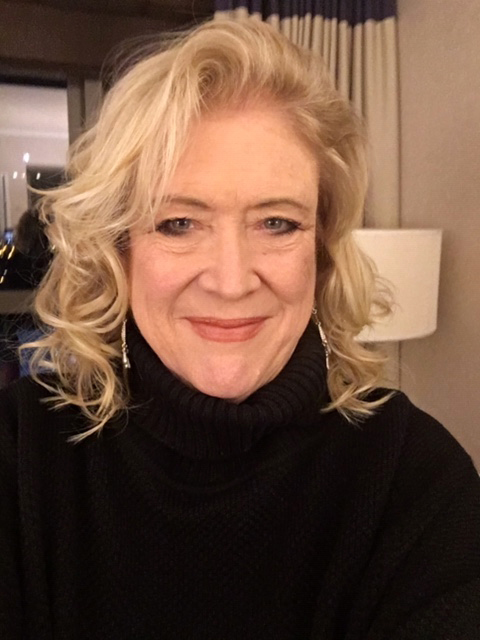 Kim Cook, Director of Creative Initiatives
Kim Cook, Director of Creative Initiatives